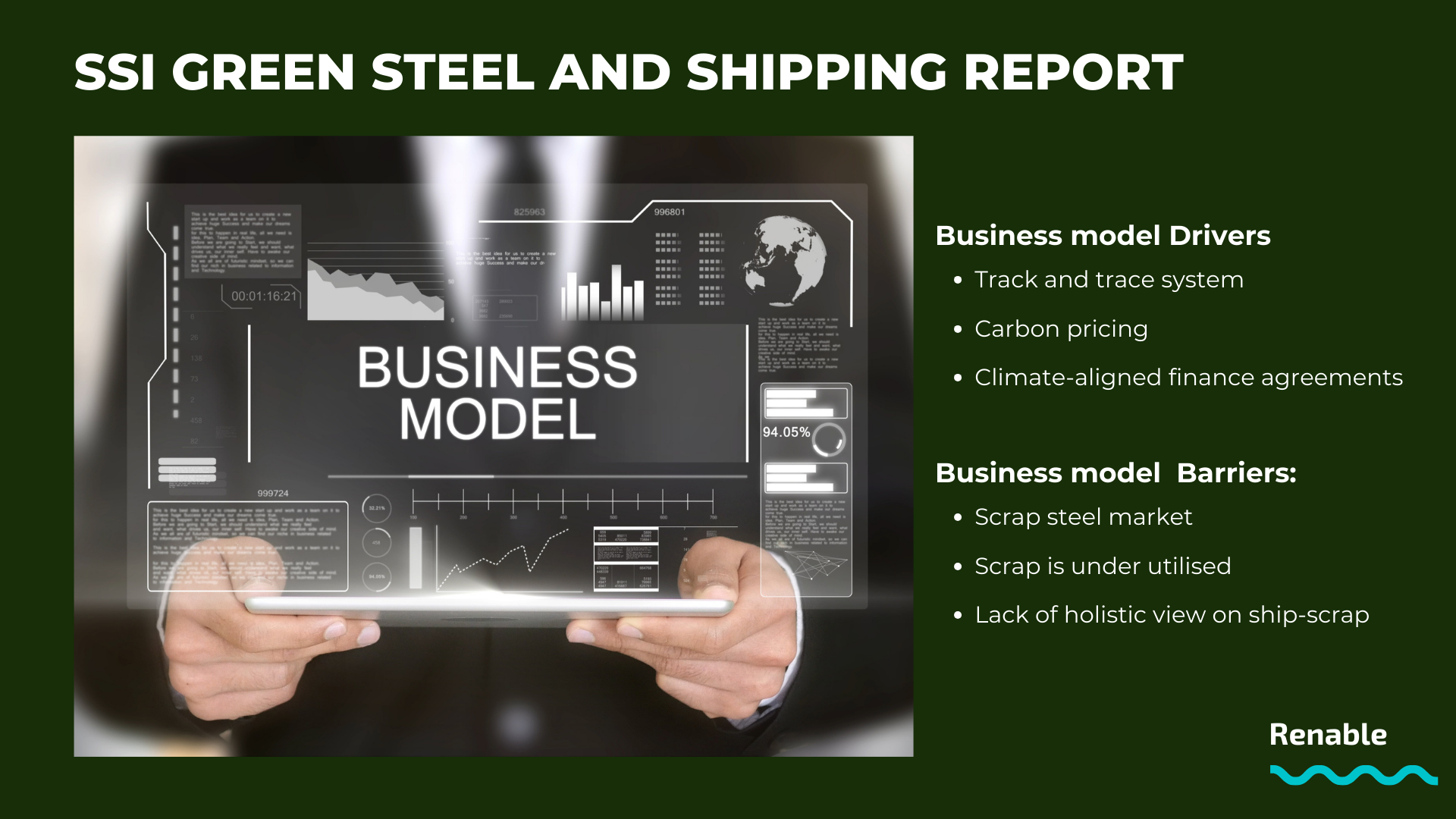Shipping and Green Steel - Blog Posts 2 out of 4
In June 2023, the Sustainable Shipping Initiative (SSI) published a remarkable report on green steel and shipping. You can access SSI's web site and find the full report here: Green steel and shipping – Sustainable Shipping

The inquiry is undertaken under the 4 headlines of Knowledge, Business Model, Regulation and Technology. Addressing those headlines in turn, our first post in a series of four looked at the Knowledge headline. In this second post, we look into the drivers and barriers listed under the Business Model headline.
Business Model Drivers (quoted from the report):
"A track and trace system based on the verification of steel throughout the supply chain can allow for greater retention of steel within shipping, as well as more efficient use of shipping scrap steel."
Our digital platform includes a track and trace system for all materials resulting from ship dismantling. At the same time, our digital platform allows for designing steel journeys and calculating emissions from those journeys. The platform is thus a tool for planning and decision making, enabling ship owners to decide the end destination of their recycled steel.
"Market-based measures already being discussed and developed, such as carbon pricing and a voluntary carbon market, have the potential to accelerate progress by creating financial incentives for green steel."
Through our platform, we can document the exact emissions (and thus emissions reductions compared to industry standards) from steel recycling / circular steel, and the resulting reductions can then be certified and become tradeable.
"Climate-aligned finance agreements, such as the Poseidon Principles and the Sustainable STEEL Principles, can help lenders set GHG emissions reduction targets for their portfolios and support decarbonisation action within the steel and shipping sectors."
Our digital platform can be used for scenario planning ahead of any negotiations with climate-friendly financiers, and can subsequently document whether the planned / promised reductions have, in fact, taken place.
"Investments in green hydrogen-based DRI produced using a zero and low GHG emissions energy source can increase the global supply of green steel."
We have no direct contributions in this regard, but do expect that our comprehensive platform will enable easier and more trustworthy tracking in respect of emissions, thus supporting the business case for using hydrogen as the reductant in future steel mills.
Business Model Barriers (quoted from the report):
"End-of-life vessels are priced according to the global scrap steel market, without consideration for the onward uptake of green steel."
Ship steel scrap is of superior quality compared to other scrap metal streams and therefore deserves higher pricing on the market. By enabling track and trace and steel recycling journey design, our platform will enable better-informed negotiations and decisions in respect of steel scrap quality and destinations.
"Shipping-grade scrap steel is often used for lower-quality applications local to the ship recycling facilities resulting in loss of value."
Our track and trace system and planning tool will enable transparency in respect of destinations and will prove a useful tool for negotiations towards greater circularity, whether physical loop or net loop [refer to SSI report for definitions of physical vs. net loop].
"Lack of scrap steel availability presents a significant barrier to producing green steel and eventual uptake in shipping."
Steel recycled from shipping is set to increase four-fold in the next decade, and our tools will ensure that steel from recycled ships can be tracked and traced, and its contribution measured. This will enable a greater availability of circular steel from and back into ships.
In short, our platform will provide greater transparency in respect of recycled ship steel's contribution, and thus enable better, more informed negotiations and decision making, both in terms of funding and in terms of circularity.